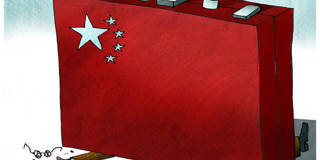China’s Last Soft Landing?
On the surface, the Chinese economy's resilience has been impressive – the first to recover, as Chinese leaders always want to remind the rest of the world. But, beneath the surface, the economy risks losing its capacity for resilience unless the authorities accelerate the transition to a more consumer-led economy.
NEW HAVEN – Once again, China has defied the naysayers. Economic growth picked up in the final quarter of 2012 to 7.9% – half a percentage point faster than the 7.4% increase in GDP in the third quarter. This was a meaningful increase after ten consecutive quarters of deceleration, and it marks the Chinese economy’s second soft landing in slightly less than four years.
Despite all the talk about the coming shift to internal demand, China remains heavily dependent on exports and external demand as major drivers of economic growth. It is not a coincidence that its last two slowdowns followed closely on the heels of growth slumps in its two largest foreign markets, Europe and the United States. Just as the soft landing in early 2009 occurred in the aftermath of a horrific American-made crisis, this latest one followed the European sovereign-debt crisis.
China has several sources of strength that have enabled it to withstand the tough external shocks of the last four years. Large buffers of saving (53% of GDP) and foreign-exchange reserves ($3.3 trillion) are at the top of the list. Moreover, unlike the West, which has used up most of its traditional countercyclical policy ammunition, China has maintained ample scope for fiscal and monetary-policy adjustments as circumstances dictate. Likewise, a powerful urbanization dynamic continues to deliver solid support for China’s high-investment economy, while enabling relatively poor rural workers to raise their incomes by finding higher-paying jobs in the cities.



NEW HAVEN – Once again, China has defied the naysayers. Economic growth picked up in the final quarter of 2012 to 7.9% – half a percentage point faster than the 7.4% increase in GDP in the third quarter. This was a meaningful increase after ten consecutive quarters of deceleration, and it marks the Chinese economy’s second soft landing in slightly less than four years.
Despite all the talk about the coming shift to internal demand, China remains heavily dependent on exports and external demand as major drivers of economic growth. It is not a coincidence that its last two slowdowns followed closely on the heels of growth slumps in its two largest foreign markets, Europe and the United States. Just as the soft landing in early 2009 occurred in the aftermath of a horrific American-made crisis, this latest one followed the European sovereign-debt crisis.
China has several sources of strength that have enabled it to withstand the tough external shocks of the last four years. Large buffers of saving (53% of GDP) and foreign-exchange reserves ($3.3 trillion) are at the top of the list. Moreover, unlike the West, which has used up most of its traditional countercyclical policy ammunition, China has maintained ample scope for fiscal and monetary-policy adjustments as circumstances dictate. Likewise, a powerful urbanization dynamic continues to deliver solid support for China’s high-investment economy, while enabling relatively poor rural workers to raise their incomes by finding higher-paying jobs in the cities.